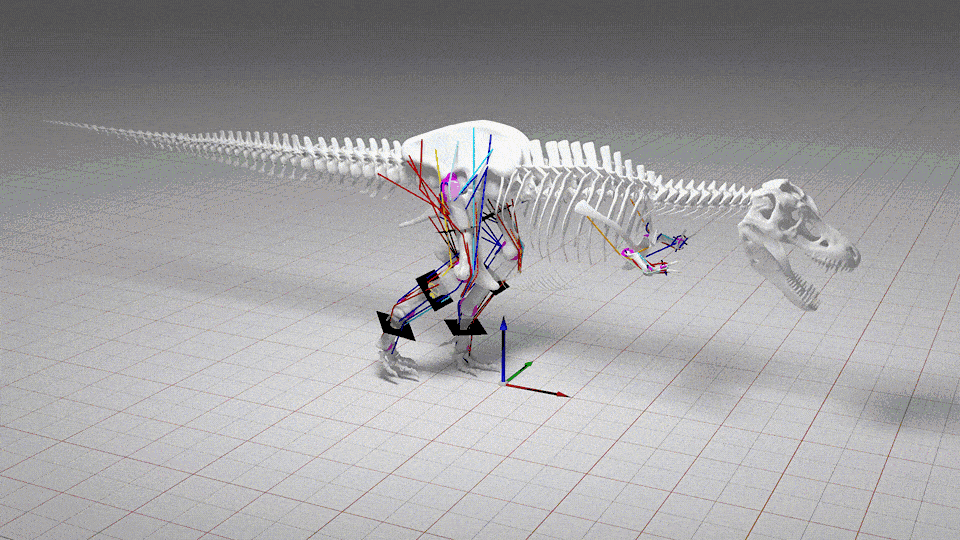When you purchase through link on our land site , we may earn an affiliate commission . Here ’s how it work .
A dodo first discovered over 50 year ago has finally been key as the remains of a pony - sized dinosaur that lived about 166 million years ago .
The fogy was spotted at the base of a cliff on the Isle of Skye in Scotland in 1973 , but it was not collect by fossilist for another 45 old age due to its tricky placement .

Researchers believe the dinosaur pulled from the Isle of Skye cliff may have been an ornithopodan — a group of herbivorous dinosaurs.
Now , according to a paper published March 6 in the journalEarth and Environmental Science Transactions of the Royal Society of Edinburgh , this fossil — which includes sherd of a spine , ribs , and hip bone — may be the remains of a dinosaur that lived during the Jurassic Period ( 201.3 and 145.0 million eld ago ) .
This dodo , nicknamed the " Elgol dinosaur " after the village near where it was find , is now considered the most complete dinosaur fogey ever discovered in Scotland , as well as being the early ever unearth there .
Located off the northwestern coast of Scotland , the Isle of Skye is the emplacement of several dinosaur fogy and footprints from the Middle Jurassic full stop , which is poorly representedin the global fossil record .

Elsa Panciroli with the Elgol dinosaur fossil. This dinosaur is thought to have lived around 166 million years ago.
Related : Megalodon may have grown up to 80 foot farsighted — far prominent than previous estimates
" This is a howling addition to the rapidly growing set of Jurassic bump from the Isle of Skye which are enabling us to learn more and more about the fat ecosystem of the time , " study carbon monoxide gas - authorStig Walsh , a senior conservator of vertebrate paleobiology at National Museums Scotland , said in a statement .
The newly identified dinosaur may have been about the size of a pony , and was at least eight eld older when it died , according to the researchers .

The fossil was first recorded by paleontologists during field trip-up between 1971 and 1982 , with a 1973 notebook computer entry bring up " bones of a dinosaur " in a cliff with a small sketch . The original finder didn’trealize its significance , and due to its awkward location , it was passing hard to remove from the basis .
research worker rediscover the disunited fossil in 2015 , and itwas finally excavate and transported from its drop locating in 2018 .
" This was a really intriguing extraction , in fact we ’d previously felt was too hard to pick up the fossil , but I thought it was really significant to examine it , " study hint authorElsa Panciroli , a NERC Independent Research Fellow at National Museums Scotland , tell in the statement .

" I was able to persuade the squad to give it a effort . It took a lot of hard workplace from a lot of people , but we did it : finally we can affirm and publish Scotland ’s first read and most over dinosaur , and that makes it all worthwhile . "
Paleontologists then studied the dodo using a reach of technique , including micro - CT scanning , which is a non - destructive imaging technique that uses X - light beam to create extremely elaborate 3D image of small object at a microscopical scale .
Theshape and microstructure of the off-white , and the fact they were found within theKilmaluag Formation — a geological shaping date to the Middle Jurassic — indicated that the fossil may be the remains of a cerapodan or ornithopod dinosaur .

Cerapodan dinosaurs are a major group of ornithischian ( bird - hipped ) dinosaur , which have a pelvic structure resembling that of modern birds . Ornithopods are one herbivorous submarine - grouping of cerapodans that lived during the Jurassic andCretaceous menses , and had peck mouths for cropping botany . One of the most well - known groups of ornithopods wereIguanodons , which were one of the first dinosaurs ever named .
— Australia ’s ' upper side down ' dinosaur geezerhood had two giant predators , 120 million - class - erstwhile fogy disclose
— What if a jumbo asteroid had not wiped out the dinosaurs ?

— Enormous skull of 200 - million - year - old giant dinosaur discovered in China
If this new dinosaur is indeed ornithopodan , it may be among the earliest ornithischian fogey , and possibly the old ornithopodan physical structure fossil in the universe .
" Some aspect of the bones argue that the specimen may be an ornithopod , a group of plant - eating dinosaur that are best known from the Cretaceous , " study co - authorSusie Maidment , a fossilist at the Natural History Museum in London , said in the statement .

" This specimen , however , would already have been a fossil by the time that the better - known ornithopod dinosaur like Iguanodon and Hypsilophodon were walk the Earth , " she said . " Recent enquiry on the fossils of Elgol has revealed a diverse ecosystem of extraordinarily preserved Middle Jurassic animals , and I ’m certain there are more exciting discoveries to make out . "
You must confirm your public display name before commenting
Please logout and then login again , you will then be prompt to enter your display name .











